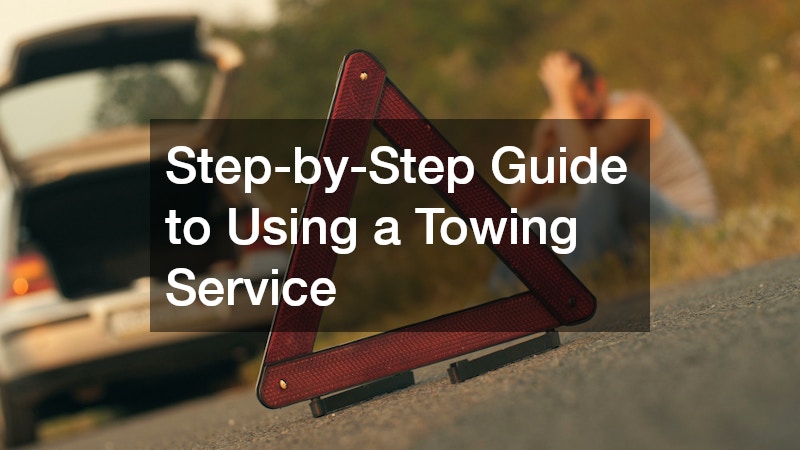Needing a towing service can be stressful, especially if your car has broken down in the middle of nowhere or after hours. Whether it’s due to a flat tyre, engine failure or an unfortunate fender bender, knowing what to expect from a towing service can make a big difference in how smoothly things go.
Many drivers don’t give towing much thought until they’re in a situation that calls for it, which is why it pays to be prepared.
This guide takes you through the entire process, from calling a towing service to getting your car safely where it needs to go. Whether you’re in the city, on the highway or stuck in your driveway, these steps will help you handle the situation calmly and effectively.
Stay Calm and Make Sure You’re Safe
The first thing to do when your vehicle stops working is to make sure you and your passengers are safe. If you’re on the road, pull over to the left as far as possible and turn on your hazard lights. Use your parking brake and stay inside the car if it’s unsafe to exit. If you do get out, move to a safe area away from traffic.
Assess the Situation Before You Call
Not every car issue requires a tow. Sometimes, problems like a dead battery or a flat tyre can be handled with roadside assistance. Some towing companies also provide these services, so it helps to describe the problem clearly when you call.
Take note of your car’s condition. Is it completely undrivable? Are there any visible leaks, noises or smoke? This information will help the towing service send the right equipment and estimate the time and cost more accurately.
Find a Reputable Towing Service
If you have roadside assistance through your car insurance or membership with a motoring group like NRMA or RACV, start there. They’ll usually dispatch a towing service quickly and often cover the cost, or at least part of it. If you’re not covered, a quick online search or phone call to a nearby mechanic can point you to a trusted local provider.
Look for a licensed towing service with good reviews and transparent pricing. Many reputable operators provide 24/7 emergency towing and have experience with everything from standard passenger cars to motorbikes and caravans.
Provide the Right Details
When you contact the towing service, be ready to provide specific information. This includes your name, location, car make and model, registration number and a description of the issue. If you know your exact location, even better. Use your phone’s maps to share a pin or read out nearby landmarks.
Be honest about the situation. If your car has been in an accident or has major damage, the driver needs to know what to expect so they can bring the right type of tow truck. There’s a big difference between towing a dead battery vehicle and recovering a car stuck in a ditch.
Know What You’re Paying For
Before agreeing to anything, ask for a quote. Most towing services have set rates based on distance, time of day and the type of job. After-hours call-outs, weekend rates or long distances can cost more. Ask if the quoted price includes loading, transportation and unloading. There should be no surprises when the bill arrives.
If you have insurance, check whether towing is included in your policy. Some insurers will reimburse you, while others work directly with authorised towing companies.
Be Present When the Tow Truck Arrives
Stay with your vehicle until the tow truck gets there if it’s safe to do so. Once they arrive, confirm their identity and make sure they’re from the towing service you contacted. You don’t want to risk handing over your vehicle to the wrong person.
Choose the Right Drop-Off Location
Decide where your car needs to go. This might be your home, a trusted mechanic or a service centre. If you’re unsure, the towing service can usually recommend a nearby workshop. Some may even offer short-term storage options if you need time to arrange repairs.
Make sure to collect any valuables from the car before it’s towed, and take photos of the vehicle in case of disputes about its condition later.
Follow Up on Repairs or Claims
After your vehicle has been towed, your next step depends on the reason you needed the towing service in the first place. If it were a breakdown, arrange repairs promptly. If it was due to an accident, contact your insurance provider as soon as possible and provide any documentation, including receipts from the towing service.
Needing a towing service isn’t something any driver looks forward to, but it doesn’t have to be a nightmare. When you understand how the process works, you can take control of the situation, protect your vehicle and avoid being taken for a ride — in more ways than one.
Whether it’s a minor issue or a major incident, choosing the right towing service and knowing what to expect can make all the difference. Keep your roadside assistance details handy, stay calm and use this guide as a reliable reference the next time things don’t go as planned on the road.

